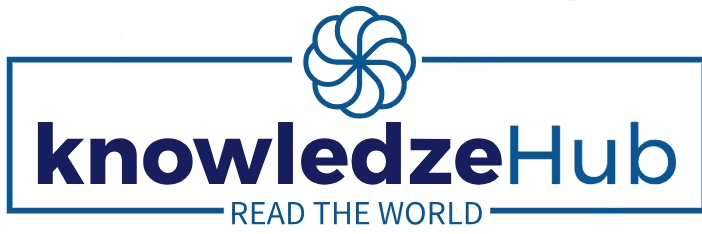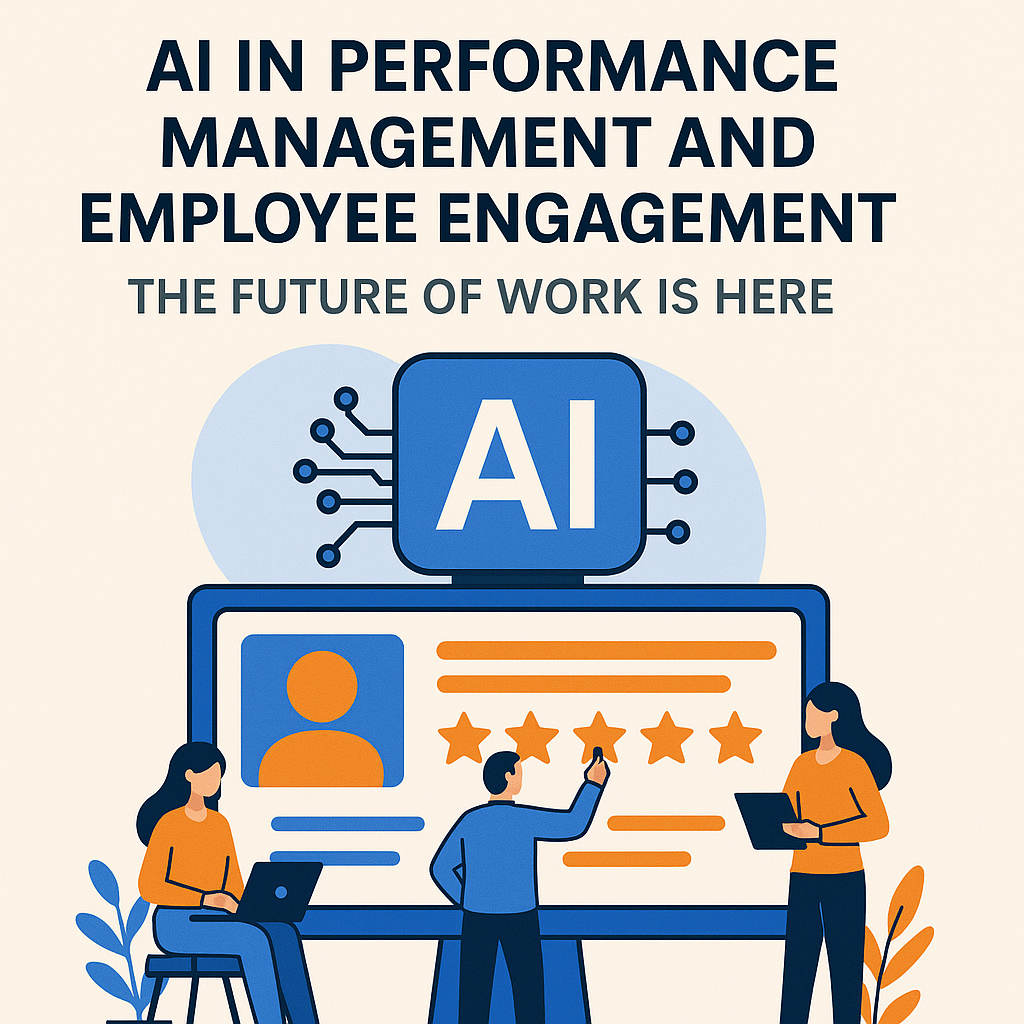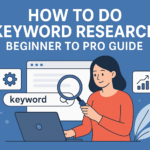Artificial Intelligence (AI) is no longer a futuristic buzzword—it’s already reshaping how businesses operate, particularly when it comes to managing employee performance and driving engagement. From intelligent analytics to personalized feedback systems, AI is enabling companies to create more adaptive, efficient, and fair workplaces.
In traditional performance management models, annual reviews and static metrics often failed to capture the dynamic nature of work. Similarly, employee engagement efforts often felt like one-size-fits-all solutions. But with AI, companies can now tailor performance evaluations, recognize patterns in employee behavior, and foster a culture of continuous improvement.
In this article, we’ll explore how AI is transforming both performance management and employee engagement. You’ll learn:
- The core AI technologies behind this shift
- Real-world examples of AI in HR functions
- The benefits and ethical challenges involved
- Practical tips for integrating AI into your organization’s people strategy
Whether you’re an HR professional, a manager, or a curious employee, this guide will help you understand the future of AI in human resource development.
Understanding Traditional vs. AI-Driven Performance Management
To appreciate how AI is changing the game, it’s helpful to first understand how traditional performance management systems work—and where they fall short.
Traditional Performance Management: A Static, One-Size-Fits-All Approach
Historically, performance management has relied on periodic reviews—often annual or semi-annual—where managers evaluate employee output based on preset goals and subjective observations. These systems commonly include:
- Annual appraisals
- Manual performance checklists
- Basic KPIs (Key Performance Indicators)
- Generalized feedback from supervisors
The limitations?
- Subjectivity: Biases and favoritism often creep in.
- Lack of real-time data: Reviews happen too late to make timely improvements.
- One-way communication: Employees have limited opportunity to share their voice or feedback.
- Stress and disengagement: Many employees dread performance reviews, seeing them as demotivating or unfair.
Enter AI: A Dynamic, Data-Driven Alternative
AI-based performance management systems bring in automation, personalization, and real-time data analytics. These tools don’t just analyze how employees are performing—they help predict, guide, and even improve performance outcomes.
Here’s how AI makes the difference:
- Real-Time Feedback: Platforms like Lattice or Workday can use AI to monitor workflows and provide instant suggestions or alerts.
- Goal Alignment: AI can track individual goals and match them with broader company objectives using intelligent dashboards.
- Sentiment Analysis: Natural Language Processing (NLP) can analyze emails or surveys to detect employee sentiment or signs of burnout.
- Bias Reduction: By using consistent, data-backed criteria, AI tools help reduce human bias in evaluations.
👉 Stat Check: According to a Deloitte report, 56% of companies are redesigning their performance management programs to reflect continuous feedback and real-time data—much of it powered by AI.
Summary: From Static Reviews to Continuous Growth
AI shifts the focus from backward-looking evaluations to forward-looking development. This isn’t about replacing human judgment, but enhancing it with data-driven insights that empower both managers and employees to grow consistently.
How AI Enhances Employee Engagement Beyond Surveys
For years, employee engagement has been measured using annual or quarterly surveys. While helpful, these methods offer only a snapshot—often too late to take meaningful action. AI is changing that by offering continuous, personalized, and actionable insights that deepen engagement in real time.
Traditional Surveys: Useful, But Limited
Let’s face it: traditional engagement surveys suffer from several drawbacks:
- Low participation rates
- Delayed feedback loops
- Generic questions
- Lack of context
They may tell you that employees are disengaged—but rarely explain why or what to do about it.
AI-Powered Engagement: Always Listening, Always Learning
AI tools are turning engagement into a living, breathing process. Here’s how:
🔍 1. Sentiment Analysis
AI can scan communication channels like emails, Slack messages, and feedback forms to assess team sentiment.
- Example: Microsoft’s Viva Insights uses AI to measure burnout risk and work-life balance indicators.
- NLP algorithms identify emotional tone, helping HR teams respond proactively.
📈 2. Personalized Engagement Plans
AI analyzes employee behavior, preferences, and work patterns to suggest customized actions:
- Recommending learning paths based on career goals
- Suggesting peer collaborations for increased motivation
- Identifying employees at risk of disengagement before it’s too late
📊 3. Predictive Engagement Analytics
Instead of just reporting past data, AI forecasts:
- Future turnover risks
- Potential drops in morale
- Impacts of managerial decisions
A Gartner study found that companies using AI-powered tools in HR saw a 20% improvement in employee engagement scores compared to those using traditional tools.
🤝 4. Enhancing Manager-Employee Interactions
AI doesn’t replace human connection—it strengthens it. By providing managers with insights into team sentiment, strengths, and challenges, AI helps guide more meaningful conversations and 1-on-1s.
Real-World Example: IBM’s Watson
IBM has integrated AI into its talent management system, using Watson to identify employee satisfaction drivers and retention risks. As a result, they reported saving $300 million in employee retention efforts over a few years.
AI Tools and Platforms Shaping Modern Performance Systems
As AI continues to evolve, it’s reshaping the digital tools HR departments and managers rely on to track and boost employee performance. Today’s performance management isn’t just about annual reviews—it’s about real-time insights, continuous feedback, and personalized growth journeys, all powered by AI.
Here’s a look at some of the leading tools and how they’re redefining workplace performance:
1. Lattice – Data-Driven Performance Reviews
- Lattice uses AI to analyze feedback trends, track employee goals, and suggest development opportunities.
- Its AI engine helps managers write clearer, unbiased performance reviews and encourages ongoing feedback loops.
- Features like pulse surveys and growth plans ensure continuous employee engagement.
2. Workday – Intelligent Talent Management
- Workday’s AI-powered tools help organizations forecast performance trends, identify high-potential employees, and spot skill gaps.
- Machine learning models offer predictive analytics on turnover risk, productivity trends, and succession planning.
- HR leaders use this data to design more personalized development paths and resource allocation.
3. Leapsome – Holistic Performance & Engagement Suite
- Leapsome combines AI with people analytics to automate review cycles, generate personalized training recommendations, and monitor employee engagement in real-time.
- It integrates with Slack and Teams, allowing seamless, in-the-flow-of-work feedback and goal tracking.
4. Eightfold AI – Smart Talent Intelligence
- Designed for enterprise HR systems, Eightfold’s platform uses AI to evaluate internal talent mobility, reskill employees, and support diversity goals.
- Its career pathing tools help employees visualize future roles and develop necessary skills—boosting both retention and satisfaction.
5. CultureAmp – Emotionally Intelligent AI
- CultureAmp uses machine learning to interpret qualitative data from employee feedback.
- It gives managers concrete, AI-generated suggestions on how to improve team culture and performance dynamics.
- It’s particularly strong at identifying early warning signs of disengagement and attrition.
AI Tool Benefits Snapshot:
| Feature | How AI Helps |
|---|---|
| Goal Alignment | Smart nudges for individual and team goals |
| Continuous Feedback | Real-time input on performance |
| Skill Gap Identification | Detects missing competencies across departments |
| Development Suggestions | Recommends learning resources based on roles |
| Bias Reduction | Flags biased language in reviews and evaluations |
The Bigger Picture
These platforms are not just “nice-to-haves.” They are becoming essential infrastructure in AI-driven organizations. By centralizing employee data, offering predictive analytics, and enabling continuous improvement, they allow leaders to make faster, fairer, and smarter people decisions.
Challenges and Ethical Considerations of Using AI in HR
While AI brings speed, scalability, and intelligence to performance management and employee engagement, it’s not without its pitfalls. Organizations must navigate a variety of ethical, legal, and practical concerns when introducing AI into people operations.
Here’s a closer look at the main challenges and how to address them:
1. Bias in AI Algorithms
Ironically, while AI is often touted as a solution to human bias, it can sometimes amplify those same biases—especially if trained on biased historical data.
- Example: An AI model trained on previous performance reviews might replicate gender or racial biases embedded in past evaluations.
- Solution: Use diverse training datasets, conduct regular audits, and employ explainable AI models that allow HR teams to understand how decisions are made.
2. Privacy and Data Protection
AI systems in HR often process sensitive employee data—from engagement surveys to performance metrics.
- Risk: If mishandled, this can lead to data breaches or misuse of personal insights.
- Solution: Companies must ensure compliance with data privacy regulations like the GDPR and India’s DPDP Act, use secure AI vendors, and be transparent about data collection.
3. Over-Reliance on Automation
AI tools should augment, not replace, human judgment. An over-reliance on algorithmic decision-making can make employees feel dehumanized or distrusted.
- Example: Automatically generated performance ratings without human validation can hurt morale.
- Solution: Always pair AI insights with human oversight. Let managers review, adjust, and discuss AI outputs.
4. Transparency and Trust
Employees have a right to know how their data is being used. When they don’t, it leads to resistance or anxiety.
- Fix: Build trust by offering clear communication, holding AI onboarding sessions, and giving employees control over their data where feasible.
5. Skills Gap in HR Teams
Implementing AI requires new competencies in data analysis, tool integration, and ethical management.
- Challenge: Traditional HR professionals may feel overwhelmed or underprepared.
- Solution: Invest in HR tech training, partner with IT teams, and develop AI fluency across leadership.
Quick Checklist for Ethical AI in HR:
- ✅ Conduct fairness audits regularly
- ✅ Prioritize employee consent and privacy
- ✅ Combine AI analysis with human feedback
- ✅ Educate HR teams on tech and ethics
- ✅ Be transparent about data usage policies
Future Trends – Where AI in Performance Management Is Heading
As organizations become more data-driven and employee-focused, the role of AI in performance management and engagement is set to evolve dramatically. Let’s explore some key emerging trends that are shaping the future of this space.
1. Hyper-Personalization Through AI
AI is enabling companies to move from one-size-fits-all performance plans to deeply personalized experiences for every employee.
- What it means: AI tools can now analyze an individual’s goals, skills, learning habits, and even personality traits to recommend tailored development paths.
- Example: If an AI notices an employee excels in design thinking but lags in communication, it may suggest a customized course or mentorship match.
2. AI-Powered Continuous Feedback Loops
The traditional once-a-year performance review is fading. AI enables real-time, continuous performance tracking using natural language processing (NLP) and sentiment analysis.
- Trend: Platforms like Lattice, Culture Amp, and 15Five are using AI to provide instant insights into team health, manager feedback, and progress tracking.
- Impact: Employees receive constructive feedback when it matters most, leading to better engagement and faster growth.
3. Emotion AI and Sentiment Analysis
With the rise of emotion AI, companies are analyzing how employees feel using cues from written feedback, tone of voice (in meetings), or survey responses.
- Benefits: Managers can proactively address burnout, disengagement, or team friction.
- Caution: Emotion tracking must be used ethically, with clear consent and data boundaries to avoid privacy violations.
4. AI as a Coach, Not Just a Tool
Future AI systems won’t just analyze performance—they’ll guide employees like virtual career coaches.
- Example: Tools like Reejig and Humu use behavioral science and AI to nudge employees toward high-impact habits, suggest daily actions, and support wellbeing.
- Result: Employees get real-time encouragement and support that feels personalized and empowering.
5. Voice and Conversational AI in Reviews
AI chatbots and voice assistants are becoming part of HR processes, making feedback and check-ins more interactive and conversational.
- Scenario: An employee can ask a bot for updates on performance goals, submit self-reviews by voice, or schedule coaching sessions—all powered by AI.
6. Predictive Analytics for Retention and Growth
AI is being used to predict:
- Who is likely to leave the company
- Who may become a future leader
- What roles are best aligned to an employee’s evolving skills
This allows organizations to act before issues arise, retaining top talent and fostering internal mobility.
Quick Snapshot: What’s Next in AI for HR?
| Trend | Description |
|---|---|
| Hyper-Personalization | Custom paths for each employee |
| Real-Time Feedback | Continuous updates & reviews |
| Emotion AI | Understand employee moods & engagement |
| AI Coaching | Nudges, reminders & personal support |
| Conversational Tools | Voice/Chatbot-based feedback systems |
| Predictive HR Analytics | Data-driven talent forecasting |
In a Nutshell: AI will no longer be just a background engine—it will become an active partner in shaping how people grow, connect, and succeed at work.
Conclusion and Actionable Takeaways
AI is no longer just a buzzword in HR—it’s actively transforming how organizations measure performance, engage employees, and build future-ready teams. However, the true value of AI in performance management lies not just in automation or analytics, but in its ability to humanize the workplace through personalization, empathy, and timely insights.
Let’s recap what we’ve learned and what you can do next:
✅ Key Takeaways
- AI enables continuous feedback, eliminating the inefficiencies of annual performance reviews.
- It supports data-driven decision-making in promotions, raises, and development plans.
- Tools like chatbots and recommendation engines can boost employee engagement by offering personalized support.
- While AI offers powerful benefits, it’s critical to manage ethical risks, such as algorithmic bias and privacy concerns.
- The future of AI in HR lies in coaching, predictive insights, and real-time emotional intelligence.
🎯 Action Steps for HR Leaders and Teams
Whether you’re in HR, L&D, or management, here are concrete steps to take:
1. Start Small with an AI Pilot
- Test an AI-based feedback tool or performance analytics dashboard with one team.
- Monitor results and employee feedback before scaling.
2. Invest in Training
- Upskill HR professionals to work with AI tools and understand basic data analytics.
- Foster a culture of tech-enabled performance coaching.
3. Be Transparent
- Clearly communicate how AI tools work and what data is being collected.
- Allow employees to opt-in and offer feedback on AI tools.
4. Prioritize Human Oversight
- Use AI to support—not replace—human decisions.
- Final judgments on performance and promotions should still involve people.
5. Review and Adapt Regularly
- AI models can drift or become outdated.
- Continually reassess your tools for fairness, accuracy, and employee impact.
🌟 Final Thought
As AI grows more intelligent and intuitive, it will become a powerful ally in fostering employee development, recognizing achievements, and predicting disengagement before it becomes a crisis. But for AI to truly work, organizations must ensure that empathy, transparency, and fairness remain at the heart of performance management.
The goal isn’t to monitor or micromanage—it’s to empower employees to do their best work.



